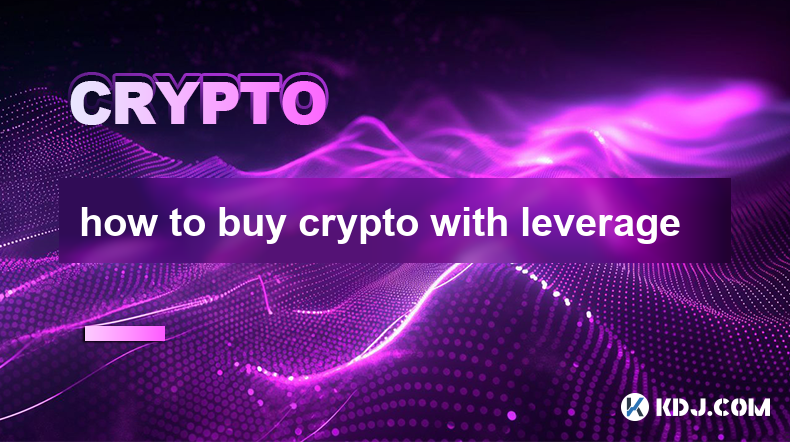-
 Bitcoin
Bitcoin $103,660.7284
0.19% -
 Ethereum
Ethereum $2,584.5385
1.73% -
 Tether USDt
Tether USDt $1.0000
-0.01% -
 XRP
XRP $2.5628
1.03% -
 Solana
Solana $178.4098
2.27% -
 BNB
BNB $652.7554
-0.33% -
 USDC
USDC $1.0000
0.00% -
 Dogecoin
Dogecoin $0.2335
2.32% -
 Cardano
Cardano $0.8132
1.28% -
 TRON
TRON $0.2752
3.49% -
 Sui
Sui $3.8916
-2.66% -
 Chainlink
Chainlink $16.9358
1.25% -
 Avalanche
Avalanche $25.5165
2.97% -
 Stellar
Stellar $0.3080
0.11% -
 Shiba Inu
Shiba Inu $0.0...01576
0.47% -
 Hedera
Hedera $0.2077
-1.32% -
 Pi
Pi $1.2055
7.64% -
 Hyperliquid
Hyperliquid $25.2205
-0.28% -
 Toncoin
Toncoin $3.3000
0.27% -
 UNUS SED LEO
UNUS SED LEO $8.8096
2.20% -
 Bitcoin Cash
Bitcoin Cash $404.5152
0.39% -
 Polkadot
Polkadot $5.0221
-0.25% -
 Litecoin
Litecoin $100.5977
-0.86% -
 Monero
Monero $339.3812
-0.99% -
 Pepe
Pepe $0.0...01376
-2.05% -
 Bitget Token
Bitget Token $4.7317
-0.68% -
 Dai
Dai $0.9999
-0.01% -
 Ethena USDe
Ethena USDe $1.0005
0.00% -
 Uniswap
Uniswap $6.6588
-2.09% -
 Bittensor
Bittensor $450.4053
-1.24%
how to buy crypto with leverage
Leveraged crypto trading, like a two-edged sword, magnifies both potential gains and risks, demanding a carefully crafted strategy and vigilant risk management to navigate its perilous depths.
Jan 26, 2025 at 10:54 pm

Key Points:
- Understanding Leverage in Cryptocurrency Trading
- Strategies for Effective Leveraged Trading
- Choosing a Suitable Cryptocurrency Exchange
- Managing Risks and Mitigating Losses
How to Buy Crypto with Leverage
Leverage is a double-edged sword in the world of cryptocurrency trading, amplifying both profits and losses. To navigate this risky yet potentially lucrative landscape, follow these steps:
1. Understand Leverage in Cryptocurrency Trading:
Leverage refers to borrowing funds from a third party to increase trading capital. For example, if you trade with $1,000 and use 10x leverage, your trading capacity effectively increases to $10,000. While this magnifies potential gains, it also multiplies potential losses.
2. Develop a Trading Strategy:
Leveraged trading demands a well-defined trading strategy that considers both entry and exit points. Determine appropriate entry prices, stop-loss levels to minimize losses, and profit targets to secure gains. Remember, emotions can cloud judgment, so stick to a predetermined plan.
3. Choose a Cryptocurrency Exchange:
Not all cryptocurrency exchanges offer leveraged trading. Select a reputable exchange that supports leverage for the desired cryptocurrency. Factors to consider include trading fees, margin requirements, and the exchange's reliability.
4. Open a Margin Trading Account:
Margin trading accounts are required for leveraged trading. Complete the necessary KYC (Know Your Customer) and deposit funds into the account. The required margin will vary depending on the exchange and leverage used.
5. Place a Leveraged Order:
Once the margin account is funded, place a leveraged order. Specify the cryptocurrency, leverage amount, order type (limit or market), and order quantity. The exchange will automatically adjust the amount of margin used based on the leverage selected.
6. Manage Your Position:
Monitor your leveraged position closely and adjust it as needed. If the trade moves against you, consider adding additional margin to prevent liquidation. Conversely, if the trade is profitable, reduce leverage or close the position to lock in gains.
7. Handle Liquidation:
If the trading loss exceeds the margin available, your position may be liquidated. This means the exchange will automatically close your position and sell the cryptocurrency to cover the margin borrowed. To avoid this, closely monitor your positions and manage risk effectively.
FAQs:
Q: What are the advantages of using leverage in crypto trading?
A: Leverage can amplify both profits and trading capacity, allowing traders to potentially make larger gains on smaller initial investments.
Q: What are the risks and disadvantages of using leverage?
A: Leverage increases the risk of substantial losses and liquidation. Traders can lose more than their initial investment if the market moves against them.
Q: How do I manage the risks of leveraged crypto trading?
A: Use stop-loss orders, monitor positions closely, adjust leverage appropriately, and consider trading smaller amounts until proficiency is gained.
Q: What are some successful strategies for leveraged crypto trading?
A: Some strategies include scalping (short-term, high-frequency trading), range trading (trading within a defined price range), and trend following (capitalizing on market momentum).
Q: Which cryptocurrency exchanges offer leveraged crypto trading?
A: Popular exchanges with leveraged trading options include Binance, Coinbase Pro, FTX, BitMEX, and KuCoin. (Note: FTX is excluded from the rankings provided.)
Disclaimer:info@kdj.com
The information provided is not trading advice. kdj.com does not assume any responsibility for any investments made based on the information provided in this article. Cryptocurrencies are highly volatile and it is highly recommended that you invest with caution after thorough research!
If you believe that the content used on this website infringes your copyright, please contact us immediately (info@kdj.com) and we will delete it promptly.
- Web3 ai ($WAI), 1,747% Projected ROI for Early Backers
- 2025-05-14 22:25:12
- The global market crosses $3 trillion again as investors offload their stablecoins for the next generation of altcoins.
- 2025-05-14 22:25:12
- Ethereum (ETH) Remains a Top Pick, But Mutuum Finance (MUTM) Is Quickly Gaining Momentum
- 2025-05-14 22:20:14
- Short-Term Bitcoin Holders Exit the Scene — What This Says About Market Sentiment
- 2025-05-14 22:20:14
- AptosLaunch Introduces Novel Dual-Token System Spanning Aptos and Solana Chains
- 2025-05-14 22:15:12
- U.S. duties on most Chinese goods will drop from 145% to 30%, while China will reduce levies on U.S. products from 125% to 10%
- 2025-05-14 22:15:12
Related knowledge

What is Ethereum’s Slashing mechanism and how to punish malicious behavior?
Feb 20,2025 at 03:08am
Key PointsOverview of slashingDifferent types of slashing in EthereumIncentives and consequences of slashingIdentifying and reporting slashed validatorsOngoing discussions and potential improvementsEthereum's Slashing Mechanism: Punishing Malicious BehaviorEthereum's slashing mechanism is an essential tool for ensuring network security and punishing mal...

What is the verifier node of Ethereum and how to become a verifier?
Feb 19,2025 at 06:00pm
The Verifier Node of Ethereum: A Comprehensive GuideKey Points:What is a Verifier Node?How to Become a Verifier NodeResponsibilities and Rewards of a Verifier NodeMinimum Requirements for Becoming a Verifier NodePotential Difficulties in Running a Verifier Node1. What is a Verifier Node?A Verifier Node is an independent entity on the Ethereum network th...

What is Ethereum’s staking, and how to participate and earn money?
Feb 19,2025 at 04:37pm
Key Points:Understanding Ethereum's Staking MechanismSteps to Participate in StakingBenefits and Rewards of StakingSecurity and Risk ConsiderationsTechnical Requirements and Hardware OptionsPotential Challenges and Troubleshooting TipsFAQs on Ethereum StakingWhat is Ethereum's Staking?Proof-of-Stake (PoS) is a consensus mechanism used in blockchain netw...

What is Ethereum’s DAO (Decentralized Autonomous Organization) and how does it work?
Feb 20,2025 at 03:12am
Key PointsDefinition and Structure of a DAOGovernance and Decision-Making in DAOsBenefits and Use Cases of DAOsChallenges and Limitations of DAOsWhat is Ethereum's DAO (Decentralized Autonomous Organization) and How Does It Work?Definition and Structure of a DAOA Decentralized Autonomous Organization (DAO) is an innovative governance and management fram...

What is Ethereum's multi-signature wallet and how to improve security?
Feb 20,2025 at 02:18pm
Key Points:Understanding the Concept of a Multi-Signature WalletBenefits and Drawbacks of Multisig WalletsRequirements for Setting Up a Multisig WalletStep-by-Step Guide to Generating a Multisig WalletImplementing Strategies for Enhanced Security1. Understanding the Concept of a Multi-Signature WalletA multi-signature (multisig) wallet in the Ethereum e...

What is Ethereum's oracle and how to provide data for smart contracts?
Feb 21,2025 at 01:30am
Key Points:Understanding the concept of oracles in EthereumExploring different types of oraclesDetailed guide on how to provide data for smart contractsAddressing potential challenges and considerationsWhat is Ethereum's Oracle?Oracles are crucial components in the Ethereum ecosystem, enabling smart contracts to access real-world data and off-chain even...

What is Ethereum’s Slashing mechanism and how to punish malicious behavior?
Feb 20,2025 at 03:08am
Key PointsOverview of slashingDifferent types of slashing in EthereumIncentives and consequences of slashingIdentifying and reporting slashed validatorsOngoing discussions and potential improvementsEthereum's Slashing Mechanism: Punishing Malicious BehaviorEthereum's slashing mechanism is an essential tool for ensuring network security and punishing mal...

What is the verifier node of Ethereum and how to become a verifier?
Feb 19,2025 at 06:00pm
The Verifier Node of Ethereum: A Comprehensive GuideKey Points:What is a Verifier Node?How to Become a Verifier NodeResponsibilities and Rewards of a Verifier NodeMinimum Requirements for Becoming a Verifier NodePotential Difficulties in Running a Verifier Node1. What is a Verifier Node?A Verifier Node is an independent entity on the Ethereum network th...

What is Ethereum’s staking, and how to participate and earn money?
Feb 19,2025 at 04:37pm
Key Points:Understanding Ethereum's Staking MechanismSteps to Participate in StakingBenefits and Rewards of StakingSecurity and Risk ConsiderationsTechnical Requirements and Hardware OptionsPotential Challenges and Troubleshooting TipsFAQs on Ethereum StakingWhat is Ethereum's Staking?Proof-of-Stake (PoS) is a consensus mechanism used in blockchain netw...

What is Ethereum’s DAO (Decentralized Autonomous Organization) and how does it work?
Feb 20,2025 at 03:12am
Key PointsDefinition and Structure of a DAOGovernance and Decision-Making in DAOsBenefits and Use Cases of DAOsChallenges and Limitations of DAOsWhat is Ethereum's DAO (Decentralized Autonomous Organization) and How Does It Work?Definition and Structure of a DAOA Decentralized Autonomous Organization (DAO) is an innovative governance and management fram...

What is Ethereum's multi-signature wallet and how to improve security?
Feb 20,2025 at 02:18pm
Key Points:Understanding the Concept of a Multi-Signature WalletBenefits and Drawbacks of Multisig WalletsRequirements for Setting Up a Multisig WalletStep-by-Step Guide to Generating a Multisig WalletImplementing Strategies for Enhanced Security1. Understanding the Concept of a Multi-Signature WalletA multi-signature (multisig) wallet in the Ethereum e...

What is Ethereum's oracle and how to provide data for smart contracts?
Feb 21,2025 at 01:30am
Key Points:Understanding the concept of oracles in EthereumExploring different types of oraclesDetailed guide on how to provide data for smart contractsAddressing potential challenges and considerationsWhat is Ethereum's Oracle?Oracles are crucial components in the Ethereum ecosystem, enabling smart contracts to access real-world data and off-chain even...
See all articles





















![[Market 5.13] BTC continues to play music and dance? #btc #ETH #sol #doge [Market 5.13] BTC continues to play music and dance? #btc #ETH #sol #doge](/uploads/2025/05/14/cryptocurrencies-news/videos/market-btc-continues-play-music-dance-btc-eth-sol-doge/image_500_375.webp)




![[Ronnie Trading Guide]-2025.5.14-Notice: Bitcoin will test the previous high soon~ wait and see~ [Ronnie Trading Guide]-2025.5.14-Notice: Bitcoin will test the previous high soon~ wait and see~](/uploads/2025/05/14/cryptocurrencies-news/videos/ronnie-trading-guidenotice-bitcoin-test-previous-wait/image_500_375.webp)





























































